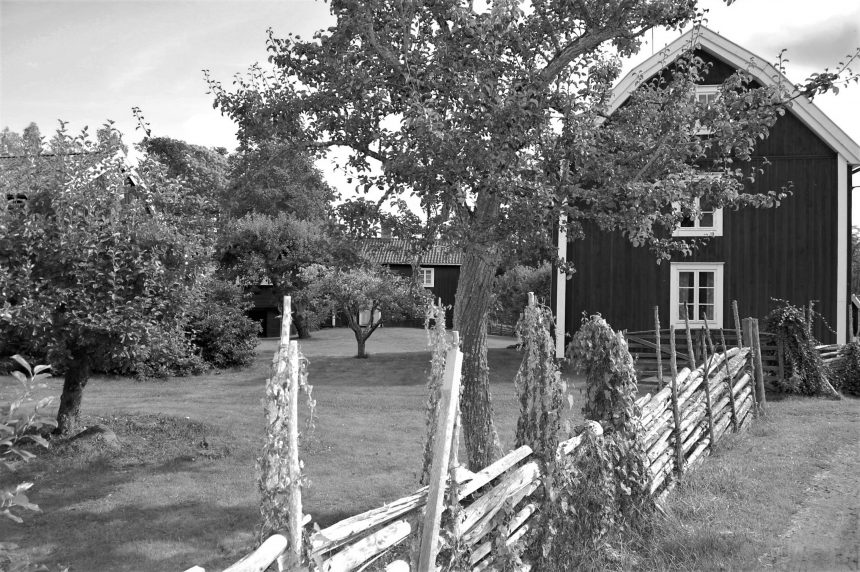There is hardly anything more Swedish than a traditional red cottage with white trim, and the beauty, for me, is in those quite rural towns or fishing villages dotting the coastline.
In Stensjö, the time has stood still – the gravel road winds through a cluster of about 30 red dwelling houses, storehouses and barns most from the 19th century, all surrounded with field fences and pastures where cattle, sheep and horses are still grazing. It used to be farmers’ country, and not that easily cultivated one, where people did everything themselves – ‘from field to table’, spending their lifetimes clearing the fields of stones and rocks, getting sore backs, harsh winters and poor harvests in return. At the most, it had 176 inhabitants, but industrialization forced people to leave rural areas and either work in the industry or emigrate to America. The village become slowly depopulated with the last two farms having been closed in the middle of 20th century. Everything might have disappeared, but with help from the Royal Swedish Academy and some business leaders the unique setting has been saved. Today, Stensjö is a cultural treasure and a living monument farmed and tended by hired staff. Its restoration took 30 years and is the most comprehensive restoration of a cultivated landscape ever carried out in Sweden.

